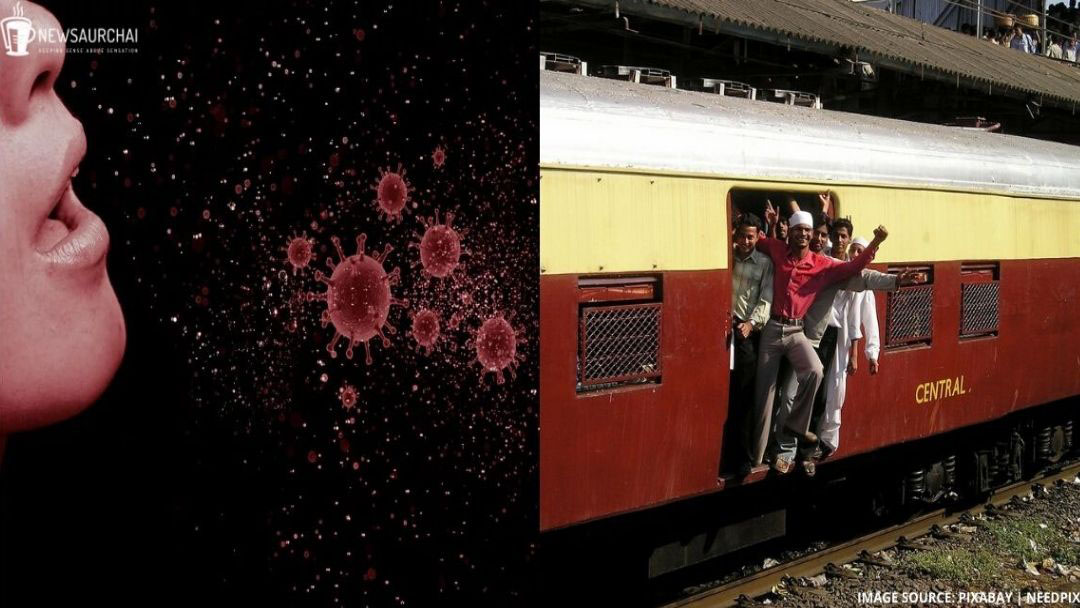
COVID-19 lead to the shutdown of one of the world’s fussiest urban rail system–Mumbai– also one of India’s most populous cities, for ordinary commuters to prevent the spread of the virus. As informed by the authorities, only government workers in “essential services” will be allowed to travel on a trimmed network.
Almost eight billion people use the Mumbai train system daily; packed to nearly thrice its capacity, it is one of the busiest railway networks around the world.
The 459km (285-mile) network is the lifeline of India‘s financial and entertainment capital, estimating for nearly 80 per cent of all commuting trips in the populous western city. As per the network’s website, the suburban trains “cover almost the distance up to the moon in one week.”
The 66-year-old network carries 60,000 passengers per km every day; as per the officials this the highest among all the leading commuter rail systems in the world. The coaches are sturdy enough to carry a “super-dense crush load”, a phrase minted by the railways to explain the intense crowding on Mumbai’s trains. This means that a nine-car train intended for 1,800 standing passengers will often carry up to 7,000 passengers.
Maharashtra, with Mumbai as its capital, has confirmed more than 101 coronavirus infections, the highest in India so far. Long-distance trains out of the city have been cancelled, but the suburban network had continued to resound on, raising fears of the mass spread of the virus on these packed trains.
The crowded service was an easy target of a terror attack in 2006 when serial blasts tore through several trains. At least 180 people were killed and more than 800 injured – the high casualty figure was attributed to overcrowding.
Travelling in such a packed train is just a cakewalk for the new coronavirus to spread. According to official records, the 1918 Spanish flu pandemic, wherein some 18 million Indians were killed, the railways “played a prominent part in spreading the flu.”
As per a report of the 1918-1919 flu in Britain, the flu spread from ports and landing places the local transport networks, particularly the railways, carried the virus from large cities to the remotest settlements.
COVID-19 lead to the shutdown of the train system.
As per the expert, this was a much-needed move as given the fact that fewest tests per million are currently taking place in India. Considering this, it would be easy for an outbreak in Mumbai where most of the people are highly depended on the rail network. Adding to which they state that Mumbai network is the fastest and surest way to spread for the COVID-19 from the densest part to the suburbs.
If we go for International instance, China had stopped trains, ferries, planes and buses from leaving the city of Wuhan also London officials announced to shut down up to 40 Underground networks as the city attempts to contain the outbreak.
Some studies do not support this theory; they state that mass closure of public transport might reduce the individual-level risk. However, they believe that household exposure most likely poses a larger threat.
As per experts, household contact was a crucial means of transmission outside of Wuhan, implying that prolonged contact enhances the risk of transmission of COVID-19.
The Indian railways are now running campaigns aggressively to ease the rush: awareness announcements, posters and videos comprising virus information.
There is also scanning taking place in the railway station, and public spitting is being checked as well.
A combination of awareness and panic has already led to a 27 per cent drop in traffic on the network. However, millions of people depend on this network to go to work and home every day.
Due to the high dependency of Mumbaikar on the network, it was necessary to shut the system down to contain a massive spread.





